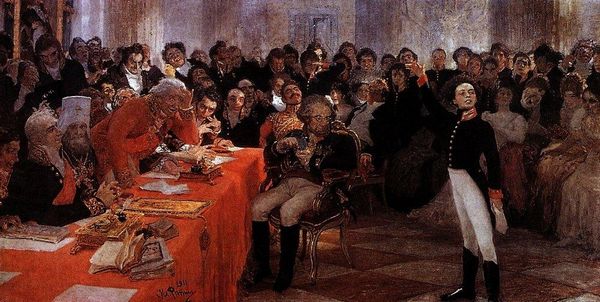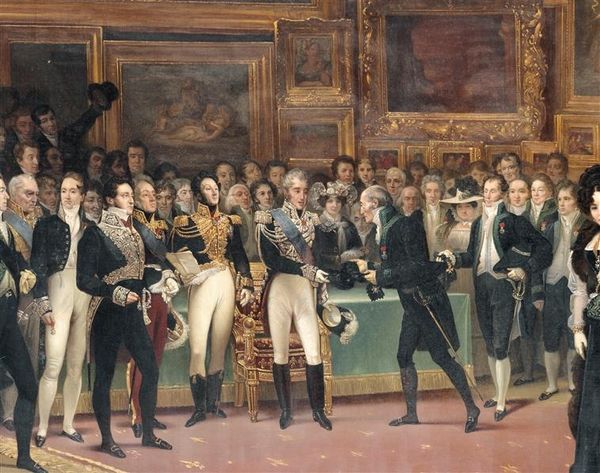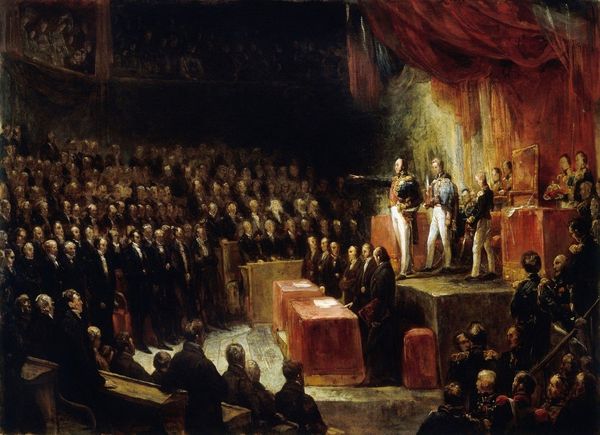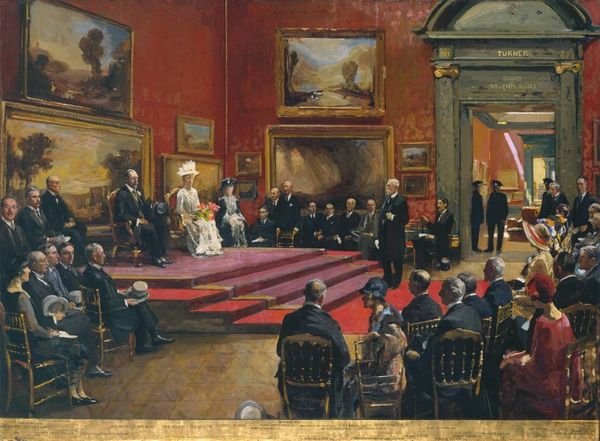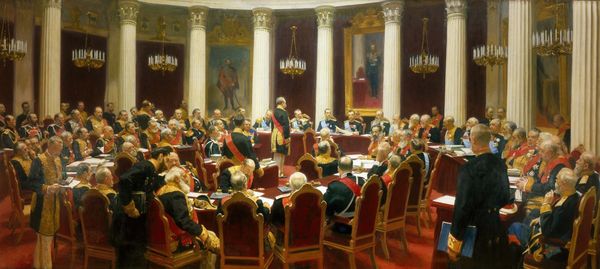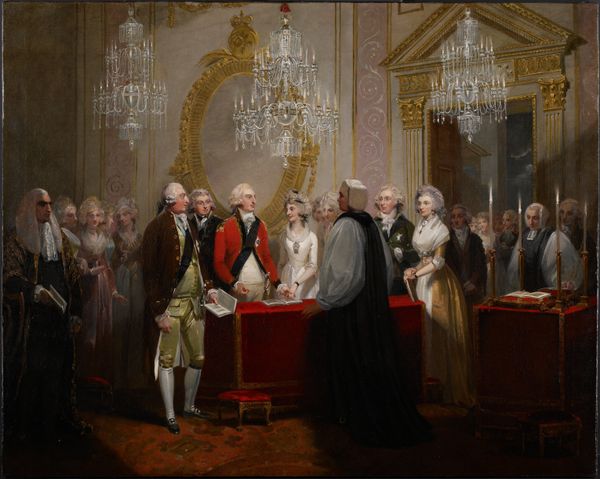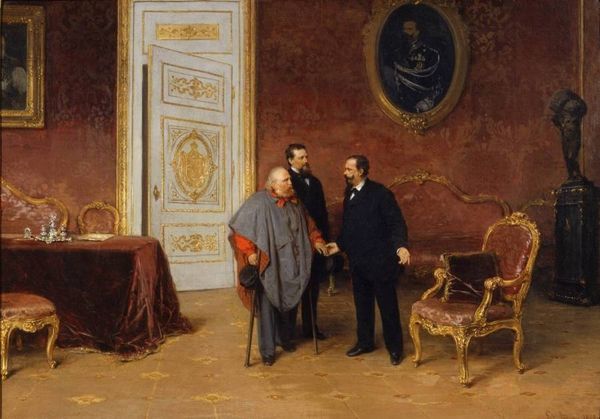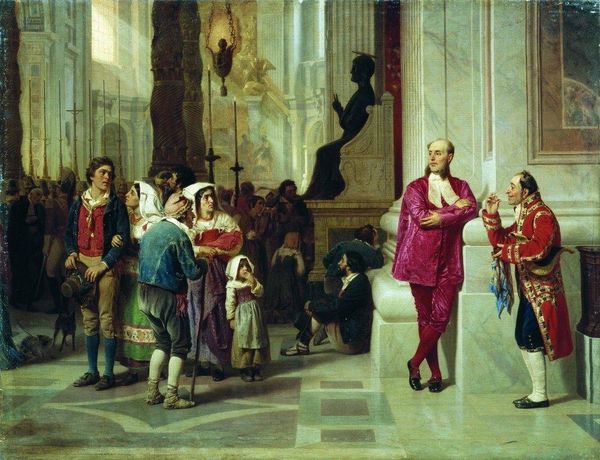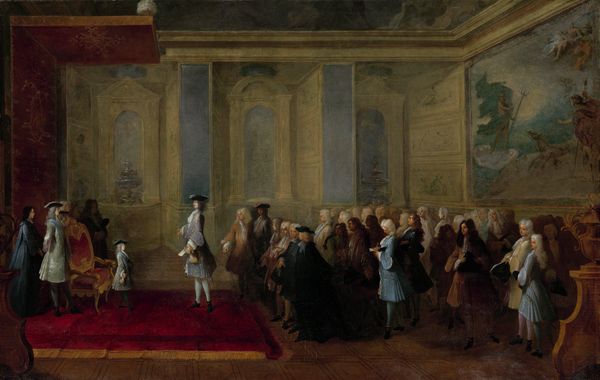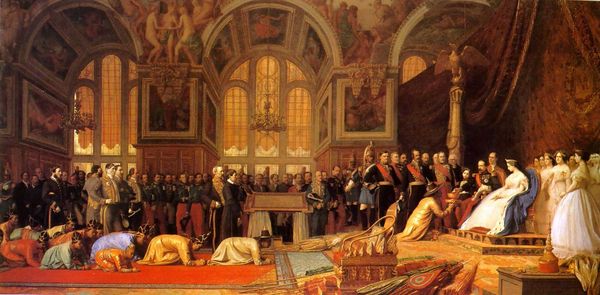
Copyright: Public domain
Editor: Here we have Ilya Repin's "A. Pushkin on the act in the Lyceum on Jan. 8, 1815," painted in 1911 using oil paint. It feels incredibly staged, like a moment of performative history. What do you see in this piece beyond a depiction of a young Pushkin? Curator: This piece isn't just about Pushkin, it’s about constructing a national narrative. Repin, painting this in 1911, is looking back at the Romantic era through the lens of a society grappling with its own identity and future on the eve of revolution. What does it mean to invoke Pushkin at this particular historical juncture, and for whom? Editor: So, it's about more than just celebrating a poet, but defining Russian identity during a time of upheaval. Does the staging you mentioned play into that? Curator: Precisely! Consider the audience. Who is included, who is excluded? It's a carefully curated vision of Russian intelligentsia. Think about who *isn't* represented – the working class, marginalized ethnic groups. The romanticism could be interpreted as a means of idealizing and perhaps obscuring complex societal realities. Is the image prompting questions about power dynamics, or does it try to make those dynamics invisible? Editor: I didn't even think about who isn't in the picture! Now, the composition feels a lot more loaded. Almost like a conscious decision to frame Russian history from a very specific, privileged viewpoint. Curator: Exactly! Repin's work gives us a starting point to understand that historical narratives, especially in art, aren't neutral. How do you think that informs our understanding of historical paintings today? Editor: It makes me realize that we always need to look critically at whose stories are being told and why. There is an intentional argument at play, even in the seemingly objective portrayals. Thank you! Curator: Absolutely! Remember art acts as cultural record and we need to bring scrutiny to them. The work invites us to be more discerning readers of visual history.
Comments
No comments
Be the first to comment and join the conversation on the ultimate creative platform.

